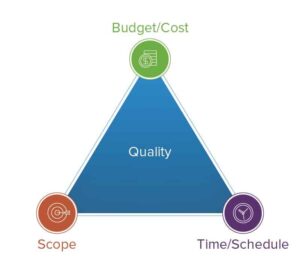M is for… Managing Projects
Project management skills are highly valued in many publishing roles and can help with a wide range of tasks, from working with authors, suppliers and freelancers to balancing a personal workload that may include multiple projects at different stages.

Introduction
Project management skills are highly valued in many publishing roles and can help with a wide range of tasks, from working with authors, suppliers and freelancers to balancing a personal workload that may include multiple projects at different stages. In publishing teams, it is common for everyone to have responsibility for some aspects of project management, whether that means keeping track of costs, ensuring that schedules do not slip or contributing to the overall quality of the final product. With that in mind, this is not so much a guide for project managers (PMs) as a set of ideas that will help you to manage and deliver successful publishing projects, whatever your job title.
It includes sections on:
· Planning
· Scheduling
· Budgeting
· Teamwork
· Documents
· Wrapping up

Planning
It is tempting to jump straight into a new project, especially in a time-constrained publishing environment. However, time spent mapping out a project in the pre-planning phase will pay dividends. The answers to these questions should help you to flesh out your plan:
· What are the scope and vision of the project?
· When is the deadline?
· What is the budget?
· What do you need to achieve?
· What do your customers expect from this product?
· What problems need solving? What risks do you anticipate?
· Who are the stakeholders and how will they be involved?

It can be helpful to think of a project in terms of the triple-constraint model of project management. The overall quality of a publishing product is affected by three constraints, all of which need to be balanced in the course of the project:
· Cost (including availability of resources as well as money)
· Scope (including functionality and features)
· Time (including project milestones and final delivery)
This model is often visualised as a triangle:

The Triple Constraint Model
Although seemingly simple, this model is powerful because when there is a change or an issue with one of the constraints, one (or both) of the others can be adjusted to compensate. For example, if a project needs to be delivered sooner than anticipated, extra resources may be required to accommodate the new schedule, or the product specifications may have to be reduced.
Scheduling
It is rare for a schedule produced in the planning stages to remain unchanged throughout a project. However much planning and risk analysis is carried out before embarking on a new project, there tend to be unexpected events and delays that have an impact on dates. For this reason, it is important to build in buffers between stages to absorb the impact of delays.
Schedules should be accessible for everyone whose input is needed to keep them on track. Accessibility in this case means both that team members can find them easily and that they are usable for those without a project management background and who need to be spending the majority of their time on other tasks. Aim to balance comprehensiveness with simplicity and transparency.
Schedules should be accessible for everyone whose input is needed to keep them on track.
Budgeting
Although it may be the team’s PM who has oversight of the project budget as a whole, other team members will usually be responsible for keeping track of their own costs and feeding them into a cost monitoring tool. It is a good idea to schedule regular reviews where costs-to-date are consolidated, so that an picture can be built up of overall spending on the project.
Cost estimates should be put in place as part of planning a project, with divergence from these estimates flagged to the PM so that any underspend can be reallocated and overspend can be mitigated by savings elsewhere.
Teamwork
A big part of successfully managing a project comes down to people management. With publishing project teams frequently made up of a range of inhouse, freelance and offshore members, communication is key. You can find ideas on how to manage communication and meetings for geographically-dispersed teams in our article on working with freelancers.

Documents
One thing most publishing projects have in common is that they generate a lot of project documentation. Folder structures can be a labyrinth that even people in daily contact with the project struggle to navigate. In order to increase efficiency (and reduce headaches), project folders should be set up in advance in a way which is logical and intuitive for users.
It is also worth investing time in creating easy-to-use templates for documents that will be used repeatedly throughout a project. These can sometimes be imported from other similar projects, but they should be reviewed carefully to ensure that they really are a good fit for the new project.
Version control is very important, as manuscripts and proofs will usually go through several iterations. Consistent file-naming and storage locations helps to ensure that team members will always be able to find the latest versions of whichever document they need. You may also consider using collaborative tools such as Google Docs for documents that will be updated by a variety of inhouse and external users – for example, style sheets and answer keys.
Wrapping up
When a project comes to a close, especially one that has involved some degree of stress or tension, team members may prefer to move on rather than revisit what went well and what went wrong. However, a project debrief is an opportunity to ensure that successes are repeated and issues that might affect future projects are properly planned for. Prepare for the debrief by asking team members to reflect on positive and negative aspects, perhaps sending a brief survey to help them to organise their thoughts.
And finally, take time to celebrate the conclusion of the project, recognise the hard work that went into it and congratulate the team that made it all happen.

Contact us
We'd love to hear from you and promise to contact you asap. Either fill in our quick and easy form below or email [email protected]

The Content Station is your trusted educational publishing team. Our local experts across the globe can deliver on any brief.

